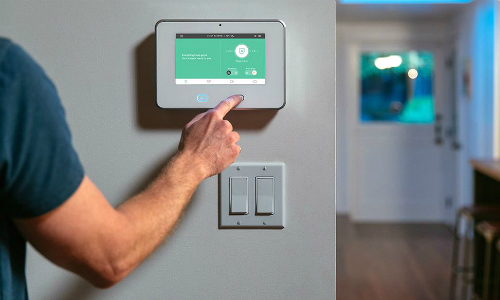Vivint Reports $87M Q2 Net Loss on 9% Total Revenue Increase
Vivint also said adjusted EBITDA increased by $64.4 million year over year while its attrition rate improved by 40 basis points sequentially to 13.7%.

Vivint added 107,980 new subscribers during Q2 2020, a decrease of 3.2% compared to 111,581 during the same period in 2019.
PROVO, Utah — Vivint Smart Home (NYSE: VVNT) reported a net loss of $87 million in the second quarter, a $28.9 million year-over-year improvement compared to $115.9 million in the prior-year period. Total revenues were $306 million in the quarter, an increase of $24.9 million or 8.9% compared to the same period in 2019.
Adjusted EBITDA scaled significantly in the second-quarter and six-month periods, and the company now expects to be cash flow positive in 2020.
Year-over-year adjusted EBITDA jumped from $88.3 million to $152.7 million, an increase of $64.4 million. Vivint reported it expanded adjusted EBITDA margins by 2,000 basis points to 49.9% of revenue compared to 31.4% in Q2 2019.
Total subscribers increased by 6.8% during the three-month period ended June 30, which accounted for approximately $19.2 million of the increase. The average monthly revenue per user rate grew by $1.31, which provided an increase of approximately $7.5 million in total revenues.
The increases were offset by a decrease of $1.2 million associated with the company’s former wireless Internet business, which was spun out in 2019.
Despite economic headwinds caused by the ongoing coronavirus pandemic, Vivint added 107,980 new subscribers during the second quarter. That amounts to a decrease of 3.2% compared to the same period in 2019. However, subscriber growth in the quarter was impacted by a six-week pause in U.S. sales activity in the direct-to-home sales channel; the discontinuation of summer sales activities in Canada; and a focus on shifting retail installment contracts (RICs) toward third-party financing partners.
“We resumed direct-to-home sales in early May, as states around the country begin reopening their economies. Aside from the delayed start, our summer sales program is proceeding well and we’re actually seeing productivity gains versus the prior year,” CEO Todd Pedersen said during an earnings call with investors on Thursday. “Another powerful tailwind is that we’re funding virtually all new customers through our paid-in-full or third-party financing with Vivint Flex Pay. This allows us to bring on new subscribers in a much more capital efficient way.”
Vivint delivers smart home and security services to more than 1.6 million customers across North America. The company’s attrition rate improved by 40 basis points sequentially to 13.7% in the second quarter. The average monthly revenue per user (AMRU) also improved to $64.66, up 2.1% year-over-year.
“The nearly half-point decrease in attrition this quarter is another standout result and frankly beat our internal plan by a significant margin,” Pedersen said. “This speaks to the fact that our core value proposition proven over two decades of taking care of our customers and their families is as relevant as ever, as people are reconnecting with their homes in the current environment.”
The quarter’s overall strong performance prompted the company to raise its guidance range for the full year. The estimate for 2020 revenue is $1.23 billion to $1.28 billion versus previous guidance of $1.2 billion to $1.25 billion. Vivint raised its adjusted EBITDA guidance to between $555 million and $565 million versus previous guidance between $525 million and $535 million.
If you enjoyed this article and want to receive more valuable industry content like this, click here to sign up for our FREE digital newsletters!

Security Is Our Business, Too
For professionals who recommend, buy and install all types of electronic security equipment, a free subscription to Commercial Integrator + Security Sales & Integration is like having a consultant on call. You’ll find an ideal balance of technology and business coverage, with installation tips and techniques for products and updates on how to add to your bottom line.
A FREE subscription to the top resource for security and integration industry will prove to be invaluable.








